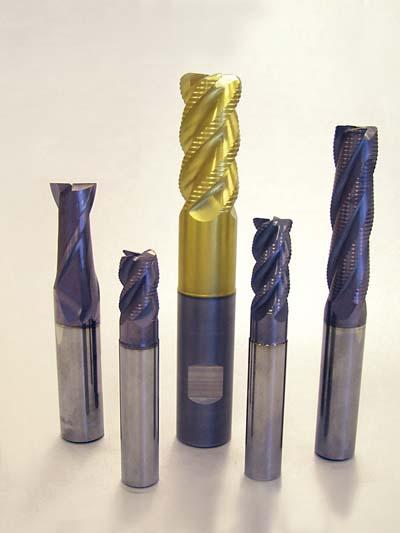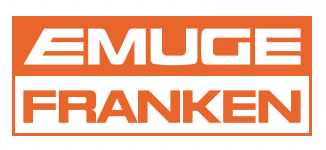
Emuge Corp. has introduced Top Cut, a new series of high performance carbide end mills. Offered in a wide range of metric and inch sizes, styles and geometries, Top Cut provides for maximum versatility in milling a broad array of materials, including hard steel at up to 55 HRC.
Ideal for mold and die as well as general milling applications, Emuge's Top Cut end mills feature a new and unique, variable-helix flute technology and a newly developed variant of the high heat resistant TiAlN coating. These features, in addition to internal coolant capabilities, enable highly efficient material removal with minimal vibration and wear.
Emuge's Top Cut End Mills are made of micrograin carbide, featuring proprietary relief ground cutting edges, making Top Cut capable of performing roughing as well as finishing cutting operations, adding to the versatility of these tools.
"Our new Top Cut End Mills are a superb alternative for shops seeking an affordable, high performance end mill choice to apply across multiple materials, cutting applications and operations, without the need for expensive tool changes," said Peter Matysiak, President of Emuge Corp.
Emuge Top Cut End Mills are available in a full range of inch and metric sizes, lengths, and in various types, with over 600 new items in total. Most tools are available for immediate delivery from stock at Emuge's North American headquarters in West Boylston, MA.
Contact Details
Related Glossary Terms
- coolant
coolant
Fluid that reduces temperature buildup at the tool/workpiece interface during machining. Normally takes the form of a liquid such as soluble or chemical mixtures (semisynthetic, synthetic) but can be pressurized air or other gas. Because of water’s ability to absorb great quantities of heat, it is widely used as a coolant and vehicle for various cutting compounds, with the water-to-compound ratio varying with the machining task. See cutting fluid; semisynthetic cutting fluid; soluble-oil cutting fluid; synthetic cutting fluid.
- gang cutting ( milling)
gang cutting ( milling)
Machining with several cutters mounted on a single arbor, generally for simultaneous cutting.
- milling
milling
Machining operation in which metal or other material is removed by applying power to a rotating cutter. In vertical milling, the cutting tool is mounted vertically on the spindle. In horizontal milling, the cutting tool is mounted horizontally, either directly on the spindle or on an arbor. Horizontal milling is further broken down into conventional milling, where the cutter rotates opposite the direction of feed, or “up” into the workpiece; and climb milling, where the cutter rotates in the direction of feed, or “down” into the workpiece. Milling operations include plane or surface milling, endmilling, facemilling, angle milling, form milling and profiling.
- milling machine ( mill)
milling machine ( mill)
Runs endmills and arbor-mounted milling cutters. Features include a head with a spindle that drives the cutters; a column, knee and table that provide motion in the three Cartesian axes; and a base that supports the components and houses the cutting-fluid pump and reservoir. The work is mounted on the table and fed into the rotating cutter or endmill to accomplish the milling steps; vertical milling machines also feed endmills into the work by means of a spindle-mounted quill. Models range from small manual machines to big bed-type and duplex mills. All take one of three basic forms: vertical, horizontal or convertible horizontal/vertical. Vertical machines may be knee-type (the table is mounted on a knee that can be elevated) or bed-type (the table is securely supported and only moves horizontally). In general, horizontal machines are bigger and more powerful, while vertical machines are lighter but more versatile and easier to set up and operate.
- relief
relief
Space provided behind the cutting edges to prevent rubbing. Sometimes called primary relief. Secondary relief provides additional space behind primary relief. Relief on end teeth is axial relief; relief on side teeth is peripheral relief.
- titanium aluminum nitride ( TiAlN)
titanium aluminum nitride ( TiAlN)
Often used as a tool coating. AlTiN indicates the aluminum content is greater than the titanium. See coated tools.

